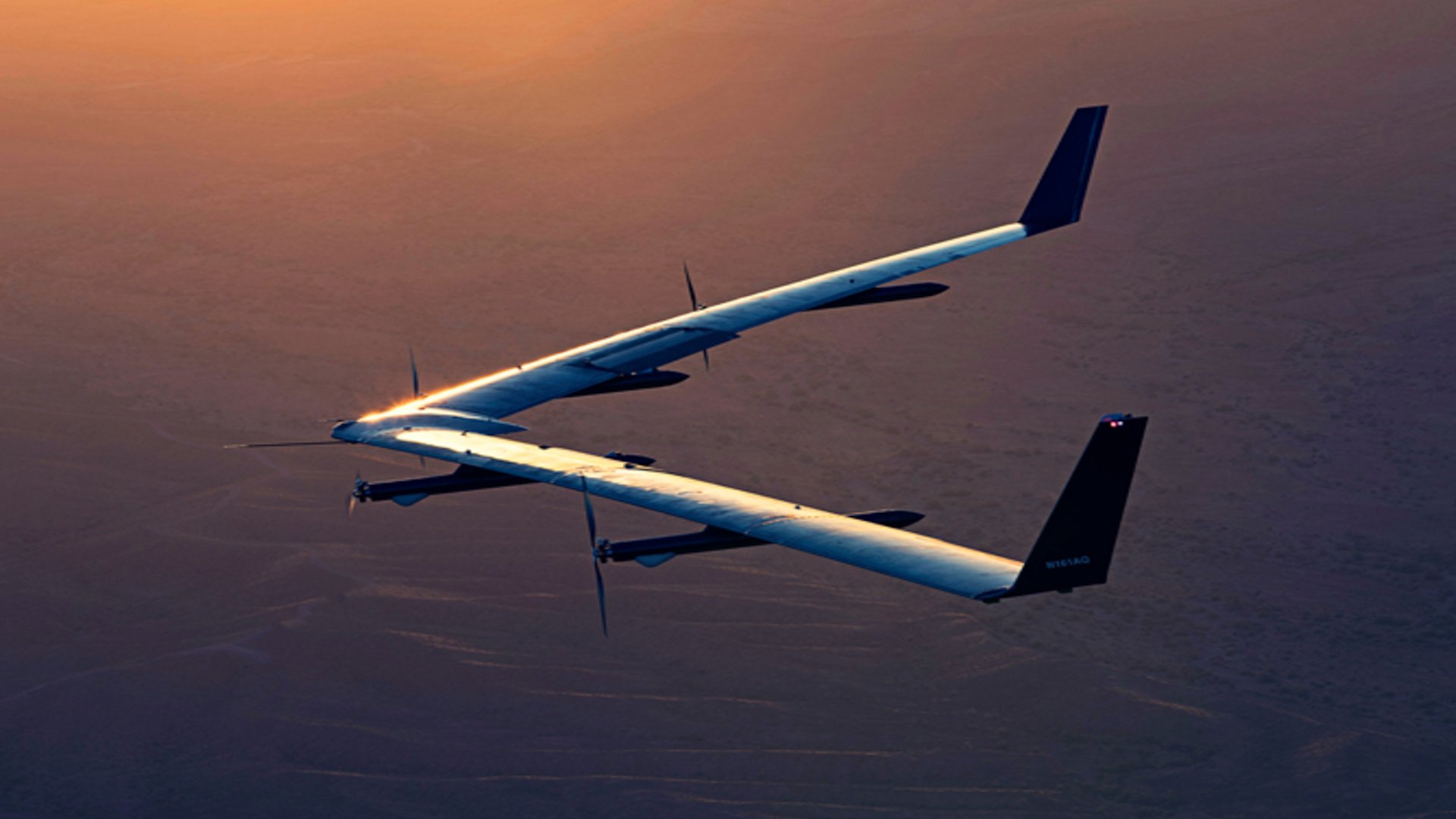

We may earn revenue from the products available on this page and participate in affiliate programs. Learn more ›
Facebook has been interested in solar-powered drones for a while now. The end goal is to bring internet access to remote and rural areas across the world, hopefully with a large fleet of UAVs that are able to stay in-flight for months at a time and communicate with each other via lasers. Facebook’s user base has just recently exceeded 2 billion, which, if you’re not aware, is almost a third of the planet. It’s only natural, then, that Mark Zuckerberg’s company is keen on providing access to the internet—and thereby, access to Facebook—to new customers across the world. According to the BBC and Facebook itself, this second test-flight went perfectly.
Last year, they ran their first test of what they call the “Aquila,” a solar cell-fitted drone with the wingspan of a Boeing 737. That test ended in a crash-landing, a result the company denied until the National Transporation Safety Board began an investigation of the incident. Until then, Facebook publicly stated that the test went well. They’re saying the same thing now, after the second test in the Arizona desert. However, the explanations of what went wrong last time, coupled with the improvements made to the Aquila, leads one to believe they might have actually had a successful flight this time around. Regarding the long-term intentions of Facebook, and how this proposed fleet of internet-access-providing drones will function, have a look at this diagram below, courtesy of the company itself.

According to Facebook’s blog post regarding the initial test and its faults, the primary reasons for failure were harsher-than-anticipated wind conditions as well as a faulty autopilot system. Apparently, the refinements made in the past several months helped prevent the same thing from happening again. Director of aeronautical platforms at Facebook, Martin Luis Gomez, refers to fixing the autopilot system, adding spoilers and an extra propeller to “increase drag and reduce lift during the landing approach,” along with other key factors. Have a look at the Aquila in action, below, and make sure to watch Facebook’s video of the successful landing on their site.

Naturally, we’re excited to see a company with resources and a forward-thinking attitude regarding drones make significant steps like this. Of course, it’s easy to think of Facebook as simply wanting to increase their user base, as more people with internet access means more potential customers. However, this is generally great news. Though the company still has quite a ways to go in order to reach their 60,000-ft altitude goal, the Aquila’s recent 3,000-ft flight is a good start, and a good news for UAV fans across the world.
